Justitie wil weer ‘begrijpelijk’ en aaibaar overkomen, dichter bij de mensen staan, en dat is goed nieuws. Gedaan met norse magistraten en vonnissen in stadhuistaal, ‘gelet op’, gezien dat’, ‘in hoofde van’… Een vriendelijk schouderklopje en dan de gevangenis in, U passeert niet langs start. Deurwaarders wisselen das en maatpak voor een leuke jeans-outfit en zetten U en Uw huisraad vervolgens met de glimlach op de stoep: het oog wil ook wat. Ach, het is weer eens wat anders, of meer van hetzelfde. Na de ‘Witte Mars’ en de idemkleurige ridders ging het ook allemaal veranderen,- de gerechtelijke achterstand vandaag is nog nooit zo groot geweest en de verjaringstruc werkt perfect met een goede advocaat. Het nieuwe Antwerpse Justitiepaleis ging een toonbeeld zijn van nederigheid, justitie-dicht-bij-de-mensen en blablabla,- het resultaat is ondertussen gekend: een modernistische mastodont die het Brusselse Poelaertpaleis overtreft. Veel interessanter dan zich te verkijken op de face-lifts, is dan ook om te analyseren hoe het gerecht in de coulissen functioneert, en hoe de discrete maatschappelijk-culturele verbindingslijnen lopen tussen establishment, misdaadmilieu en politiek theater. Een verkenning van de ingewanden van dat wat zich sinds de jaren ’80 de ‘rechtsstaat’ is gaan noemen…
Gerecht en ‘milieu’: boswachter en stroper tegen Robin Hood
Eerst een paar feiten.
Op 22 November 2005 kwam Madani Bouhouche bij het houthakken onder een eik terecht, vlakbij zijn optrekje in de Franse Pyreneeën. Een wat onnozel einde voor dé toplegende uit de Belgische onderwereld. Hij was zijn loopbaan begonnen bij de Belgische OpsporingsBrigade, maar dook al snel voor eigen rekening in het zware milieu, samen met andere (ex-) rijkswachters. Bouhouche werd voor het eerst aangehouden in januari 1986 op verdenking van moord op wapeningenieur Juan Mendez, maar in november 1988 weer vrijgelaten. In 1995 werd hij veroordeeld tot 20 jaar dwangarbeid wegens moord op een Antwerpse diamantair, maar hij kwam 5 jaar later (!) al voorwaardelijk vrij, om dus stante pede naar het zonnige Zuiden uit te wijken. Waar hij companen uit het milieu ongestoord bleef ontmoeten, ondanks de voorwaarden van zijn parool. Bovendien dook zijn naam regelmatig op in het onderzoek naar de overvallen van de ‘Bende Van Nijvel’ tussen 1982 en 1985, en had de cel Jumet (belast met het onderzoek, dat om mysterieuze redenen aan het parket van Dendermonde was onttrokken) alle redenen om Madani met meer dan gewone belangstelling te blijven volgen. Niet dus, men liet hem compleet ongemoeid. Sterker nog: pas in Januari van dit jaar kwamen onze meesterdetectives ‘toevallig’ (sic) op de hoogte van zijn dood en pakten vervolgens hun koffers richting Pyreneeën om wat te gaan snuffelen in de villa van de al twee maanden overleden topgangster. De vraag waarom hij al die tijd rustig in la douce France mocht rentenieren, blijft onbeantwoord, evenals de vraag waarom het onderzoek naar de Bende van Nijvel na 20 jaar niet één serieus spoor heeft opgeleverd. Werk op de plank voor échte speurneuzen en onderzoeksjournalisten. Want met die cel Jumet wordt het nooit wat, zoveel is zeker.
Het geval Bouhouche is typisch voor de innige verstrengeling van gerecht en misdaadmilieu, ondanks het vertoon van de spectaculaire razzia's. De aloude kroeggrap dat de criminelen de grootste werkgevers van de politie zijn en dat er een soort gentlemen’s agreement tussen beide bestaat, is eigenlijk nog een understatement: het gaat dikwijls over hetzelfde soort lieden, dat, afhankelijk van de situatie, aan de ene of de andere kant terechtkomt en ook wel eens van kamp wisselt. Het verhaal van de boswachter en de stroper dus,- ook Bouhouche is begonnen als rijkwachter. Hun natuurlijke symbiose staat hen toe om een nieuwe vijand te definiëren: de spelbedervers en outlaws die het systeem zelf in vraag stellen,- om in de beeldspraak van het bos te blijven: de Robin Hoods van deze wereld. De echte schietschijf van het gerecht lijkt dan ook niét de georganiseerde misdaad, maar individuen en groupuscules die als ‘staatsvijandig’ geboekstaafd staan. De ‘politieke’ criminelen dus. De grotendeels non-verbale modus vivendi van justitie en milieu bestrijkt een brede schemerwereld van speurders, tipgevers, verklikkers, drugdealers, junkies, spijtoptanten, infiltranten allerhande, waar het grote publiek geen zaken mee heeft, maar die ideologisch ook tot een ‘rechtse’ onderstroom behoort.
Het kat-en-muisspel tussen gerecht en onderwereld heeft iets sportiefs, terwijl het opjagen van politieke dissidentie bittere ernst is. De georganiseerde misdaad levert het alibi voor méér politie, maar ondersteunt de klopjacht bij gelegenheid ook logistiek en operationeel, tot op het niveau van een parallelle militie.
Het verschil in strafmaat tussen klassieke criminaliteit en politieke subversie toont aan dat deze stille verstandhouding zich voortzet tot in de rechtszaal. Het valt bijvoorbeeld op dat de vervolgingsijver t.o.v. de Cellules Communistes Combattantes (CCC), eveneens actief medio de jaren ’80, veel groter was, dan de gedrevenheid om een oude rat als Bouhouche te volgen. De leden van die extreem-linkse cel, met twee dode brandweerlui op hun actief, -min of meer een ongeluk, zo zou blijken- werden vrij snel gearresteerd en kregen een gepeperde rekening: levenslang voor leider Pierre Carette die pas voorwaardelijk vrij kwam in 2003. Zijn ‘medeplichtige’ Pascale Vandegeerde, die alleen maar een pamfletje had getypt en niet eens bij de acties betrokken was, kreeg 25 jaar en verliet in 2000 de gevangenis als een oude vrouw. Men herinnert zich het historische dovemansgesprek op Canvas tussen de wereldvreemde Marxist Pierre Carette kort na diens vrijlating, en zijn gewezen vervolger Wilfried Martens, in die tijd premier. Zelden zo’n ontluisterend psychodrama op TV gezien. Voor de moraliserende katholiek Martens (die het parlement in 1985 heel de tijd had voorgelogen over de kernraketten, dit terzijde) was Carette zelfs geen mens, maar eerder een wild beest, iets Hannibal Lector-achtig.
Het verhaal van dierenrechtenactiviste Anja Hermans spreekt ook boekdelen: hoe een rebelse punkster in fanatiek gezelschap terechtkomt, betrokken geraakt bij de aanslag op een hamburgertent en naderhand probeerde de auto van een onderzoeksrechter in brand te steken. Anja is me er eentje. Ooit kalkte ze, daags voor de blijde intrede van Filip en Mathilde, ‘Schijt aan de monarchie’ op het Antwerpse Boudewijnmonument. Normaal spreekt men over graffiti en zelfs straatkunst. Dat Boudewijnmonument is overigens op zich oerlelijk, ik vond Anja's ingreep estethisch zelfs een verbetering. ‘Staatsgevaarlijk’ luidde het verdict. Twee keer de maximumstraf. Uit de verslagen van de onderzoekscel blijkt duidelijk dat niet de materiële schade aan de McDonalds of het monument op zich, maar de symboolwaarde en het motief de speurders interesseerden,- nl. de ‘anti-imperialistische’ (sic) neigingen van Anja die, naar ik kan schatten, minstens zo lang gebromd heeft als Monsieur Bouhouche en die momenteel nog altijd wordt gestalkt door de staatsveiligheid. Haar parool werd wél naar de letter opgevolgd: toen haar nieuw lief een strafblad bleek te hebben, vloog ze terug achter de tralies. Vijf zelfmoordpogingen heeft ze er ondertussen op zitten. Door een extra streng gevangenisregime, inclusief isoleercel, is ze mentaal en fysiek een wrak. Geen politicus die deze schending van de mensenrechten durft aan te kaarten.
Twee maten en twee gewichten? Het lijkt erop dat gerecht en milieu tot hetzelfde netwerk behoren en objectieve bondgenoten zijn in het uitbouwen van een sterk politioneel apparaat, gericht op het uitschakelen van lastposten. De wederzijdse infiltratie van gerecht en misdaadmilieu is niet eens abnormaal of pervers, het behoort tot de standaardstrategie van de Belgische Staatsveiligheid. Het kat-en-muisspel tussen gerecht en onderwereld heeft iets sportiefs, terwijl het opjagen van politieke dissidentie bittere ernst is. De georganiseerde misdaad levert het alibi voor méér politie, maar ondersteunt bij gelegenheid ook logistiek en operationeel, tot op het niveau van een parallelle militie. De Bende van Nijvel betekende met haar 28 doden de ontsporing van die logica, en dat Bouhouche er iets mee te maken had, zal ooit aan het licht komen: een para-militair doodseskader dat, via het format van de warenhuis-holdup, een ultrarechtse coup in België moest voorbereiden. Dat het zover niet gekomen is, heeft vooral te maken met externe, macropolitieke omwentelingen zoals de val van de muur en het zgn. ‘einde van het communisme’, waardoor het rechts-Belgicistisch discours à la VDB en Baron de Bonvoisin zijn vijandbeeld compleet de mist in zag gaan.
Elites en geheimtaal: het geknetter van de kleine lettertjes
Ondertussen zijn we de 21ste eeuw binnengewandeld: andere tijden, andere zeden. Exit Bouhouche. Het 'milieu' is nagenoeg helemaal overgenomen door de Oosteuropese maffia, die voor de rest overigens dezelfde rol van haas speelt. De gangsters van weleer gaan op rust. Murat Kaplan, auteur van een resem gewapende overvallen met dodelijke afloop, is allang weer een vrij man... die onlangs werd betrapt op het jatten van een paar planken voor zijn kiekenkot. De oude villadief Jan Fabre werd gepromoveerd tot decorateur van het Koninklijk Paleis: het establishment biedt volop plaats aan bekeerde stropers.Hoe zit dat postmodern netwerk eigenlijk in elkaar?
In zijn boek ‘De Elite van België-Welkom in de club’ (Uitg. Van Halewyck) geeft onderzoeksjournalist Jan Puype een interessante staalkaart van discrete en machtige netwerken in ons land: loges, ‘denktanks’, serviceclubs allerhande, waar schoon volk bijeenkomt en belangrijke deals informeel worden bedisseld, ver van Uw en mijn bed. De geheimzinnigdoenerij van de clubs is méér dan folklore, al lijken de rituelen ons dikwijls archaisch en grotesk: ze wijzen op afscherming en bedekken verregaande normvervaging. Het fenomeen wijst op een verschuiving van de ‘klassieke’ milieu/gerecht-aliantie naar een afgestofte, echte oligarchie waarin adel, academici, topambtenaren, industriëlen, rechters, politici, advocaten, maar ook geaccrediteerde witteboordcriminelen een plaats vinden. Hier en daar mag ook een brave journalist of gesettlede kunstenaar het gezelschap opfleuren. Overigens haast allemaal lui die op de nominatielijst staan voor een ereteken of een adellijke titel: het Hof superviseert en patroneert discreet deze amicale topmilieus. Complot of natuurlijke affiniteit? Of komt van het een het ander? De magistratuur voelt zich in deze afgeschermde cenakels van het establishment in elk geval perfect thuis. Het verklaart bv. de milde vonnissen in de zgn. ‘jachtongevallen’ (een dronken baron die vanop zijn domein een wandelaar afschiet) of, recent nog, de onverwachte vrijspraak in de pedofiliedossiers van het sjieke Brusselse St. Michielscollege, waar de rechter van dienst toevallig ook school had gelopen. Of de zachte behandeling van Paul Nihoul, zakenman, arrangeur en nevenintrige uit het Dutroux-dossier. Klassejustitie dus, zonder twijfel.
De hermetische taalcode van de elites vermenigvuldigt zich over alle takken van het establishment en neemt allerlei gedaanten aan: van het onleesbare Belgisch Staatsblad, over het academisch potjeslatijn, de mystificaties van het artistiek modernisme, het Sanskriet van de beursanalyses, tot het abrakadabra van de loges.
Het boek van Puype is eigenlijk een uitloper van de Dutroux-affaire die de Witte Beweging op gang bracht: politiek is deze beweging mislukt, maar de maatschappelijke onderstroom, het algemeen onbehagen omtrent zaken die achter onze rug en boven ons hoofd worden bedisseld, is vandaag sterker dan ooit. Het is overigens, o ironie, vandaag vooral het Vlaams Belang dat de vruchten plukt van deze mislukte revolte tegen een systeem dat leeft van de desinformatie. Macht heeft in de moderniteit niets te maken met dwang maar alles met ondoorzichtigheid. De code van de elites vermenigvuldigt zich over alle takken van het establishment en neemt allerlei gedaanten aan: van het onleesbare Belgisch Staatsblad, over het academisch potjeslatijn, de surrealistische mystificaties van het artistiek modernisme, het Sanskriet van de beursanalyses, tot het abrakadabra van de loges. De complexiteit van het geschreven recht (het hermetisch wetboek of ‘codex’) is het model voor al deze geheimtalen. Het is op zijn beurt een transcriptie... van het Bargoens (de geheime dieventaal). Andermaal is de band tussen boven- en onderwereld opmerkelijk. De geheime protocollen van de clubs zijn de afspiegeling van een hermetisch wetboek vol kleine lettertjes,- die dan weer aanleiding geven tot allerlei juridische spitstechnologie, waarvan de ‘verjaring’ de bekendste is. De dingen moeten dus ingewikkeld gemaakt worden om de netwerken intact te houden en om een mistgordijn te creëren voor ontsnappingsroutes van fijne lui die zichzelf wat te enthousiast bediend hebben. De recent gestemde wet Franchimont biedt in dat opzicht een uitgebreid menu van subtiele uitwijkmanoeuvers voor wie 'de weg kent'. Het Belgisch Staatsblad stortte vorig jaar 57.746 bladzijden wet- en regelgeving over onze hoofden uit,- een voor gewone burgers onverteerbaar abrakadabra, enkel toegankelijk voor een beperkte klasse juristen.
Het fenomeen fraude zal in belang toenemen: het is de postmoderne reproductievorm van de elites, niet enkel materieel maar ook symbolisch: het 'plukken van de vrucht' van het geheim, kenmerkend ritueel in een esoterische cultus...
Witteboordcriminelen als de hormonenmaffia ontsnappen aan vervolging via gesofisticeerde proceduretechnieken. Om dezelfde redenen zullen de miljoenenfraudeurs van KB-Lux en de textieldynastie De Clerck buiten schot blijven: hun advocaten kennen de achterpoortjes en de trucs om een dossier ad infinitum te rekken. Het fenomeen fraude zal in belang toenemen: het is de postmoderne reproductievorm van de elites, niet enkel materieel maar ook symbolisch. Het gaat m.n. niet alleen om illegale verrijking, maar ook om de ritualisering van het netwerkfenomeen. Men plukt a.h.w. de vruchten van het geheim,- iets wat een essentieel element is de esoterische cultus, zie bv. het Laatste Avondmaal, het Graalmysterie etc. Corruptie is de nuttiging van de hermetische code door de genootschap die het geheim intact houdt en daarin ook investeert. Discretie, solidariteit en geheimhouding worden des te belangrijker, naarmate de leden van het genootschap zich in de grijze zone bewegen. Men is verbrand, en men weet het van elkaar. Het klassieke “milieu” blijft daarin de rol vervullen van katalysator en objectief alibi voor het uitwoekeren van een gesofistikeerde regelgeving die evenzovele achterpoortjes bevat. Het kwade geeft een bestaansreden aan het goede, en corrumpeert het tegelijk.
Het is overigens opmerkelijk hoe bv. een assisenzaak, zogezegd de voortzetting van het volkstribunaal, gemanipuleerd wordt door de charades van magistratuur en advocatuur die onderling ‘dezelfde taal spreken’. Mediavedetten zoals Jef Vermassen vergroten nog dit theatraal niveau. Het is trouwens sowieso sterk af te raden om zonder advocaat voor de rechtbank te verschijnen –wat strikt genomen nochtans mag-: mensen die zichzelf verdedigen doen dat niét in het jargon en stellen zich op die manier de facto buiten het systeem dat nu net gebaseerd is op een hoge techniciteit van het discours.
De magische driehoek van de rechtsstaat komt nu langzamerhand uit de mist: elites, gerecht en onderwereld vormen een soort cirkulair ganzensspel waarin codex (het wetboek), politie-apparaat en fraude elk hun rol spelen in de objectivering van het geheim en de reproductie van het netwerk:
De media en de 'openbaarheid'
Desinformatie is de nieuwe strategie van de elites en de grondslag voor ongelijkheid. Macht is, in het post-Dutroux-tijdperk, subtiel, discreet, flou, minuscuul. Het fluisterschrift van de paragraaf, de uitzondering, de bijlage, de voetnoot, het glossarium, bevat vandaag de échte toverspreuken, de hefbomen die dingen in gang zetten en achter de schermen processen beïnvloeden. Kennis is macht, dus moet ze geheim blijven. De eeuwige paradox van de pedagoog ligt hieraan ten grondslag, we hebben het allemaal meegemaakt op de universiteit: de prof wordt betaald om zijn kennis door te geven; doch, moest hij daarin compleet slagen, dan zou zijn rol overbodig worden. Hij leeft dus van complexiteit,- de leraar geeft maar een deel van zijn kennis prijs, heel gedoseerd, net genoeg om leerlingen op te werken tot specialisten… die weerom het geheim kunnen bewaren.
Men zou kunnen replikeren dat het de kerntaak van de media is om dit obscurantisme te ontmaskeren. Inderdaad, maar dat veronderstelt een analytisch-filosofisch instrumentarium dat tegelijk verstaanbaar en subtiel is,- en daar hebben de massamedia duidelijk niet voor gekozen. Hun taal is onmiddellijk, krachtig en niet-reflexief,- waardoor ze eigenlijk complementair en medeplichtig worden aan de versluiering van de macht binnen de elites. Net door de nivellerende werking van de televisie, en haar ijver om een 'groot publiek' te bereiken, wordt 'universele toegankelijkheid' dé definitieve barrière om de complexe codes te kraken.
Het groeiende idee van de mediatieke ‘openbaarheid’, waarin alles getoond en ‘ontsluierd’ kan worden (Big Brother), is gebaseerd op de illusie dat de waarheid simpel is. Het netwerkverhaal wijst op het tegendeel. Hoe dit analyseren? Wie vindt de taal uit die zo rijk is dat ze de geheimen ontmaskert, en zo helder dat ze ook haar eigen code kraakt?
Er ontstaat zo een dubbele waarheid, een voor de buitenwereld en een voor ingewijden. Enerzijds is er de taal voor het klootjesvolk, van de commerciële slogans, de politieke on-liners, de vette mediakoppen. Direct, toegankelijk, evident: zeg maar de Stevaert-rethoriek. Daaronder zit een andere waarheid, bestemd voor zij die toegang hebben tot de netwerken: een complexe code, geformuleerd in een subtiel discours waar een leek in verdrinkt.
Het groeiende idee van de mediatieke ‘openbaarheid’, waarin alles getoond en ‘ontsluierd’ kan worden (Big Brother), analoog aan het populistisch, gemakkelijk aanslaand discours van politici genre J.M. De Decker, is gebaseerd op de illusie dat de waarheid simpel is. Het netwerkverhaal wijst op het tegendeel. Onder elke bodem zit weer een andere. Wie vindt de taal uit die zo rijk is dat ze de geheimen ontmaskert, en zo helder dat ze ook haar eigen code kraakt?
Politiek en magistratuur: de Wetstraat als geheime keuken
Op naar de hoogste regionen.
Een telling naar opleiding en beroep binnen de Belgische regeringen en parlementen levert opmerkelijke resultaten op: zowat 70 % van het politiek personeel mag zich jurist noemen. Een verontrustend percentage. Het aantal ‘menswetenschappers’ (sociologen, psychologen, filosofen…) of natuurwetenschappers is absoluut te verwaarlozen, zelfs de economisten zijn ver in de minderheid: de Wetstraat is het terrein van de advocatuur. De wetgevende macht is, ondanks alle schijnbewegingen zoals de Kafka-campagne, alleen al door haar juristenpopulatie een pure producent van raadsels, een Sybillijns orakel dat alleen door karkassen als Eliane Liekendael, bedenkster van het Spaghetti-arrest, juist kan geïnterpreteerd worden.
De sleutel van de hermeneutiek (‘interpretatiekunst’), voorbehouden aan een kaste van juristen en schriftgeleerden, ligt in de geheime keuken van de Wetstraat, waar de teksten worden gefabriceerd. Dat is een enorme kortsluiting in de klassieke dichotomie van subject (lezer) en object (tekst): de ontcijferaars en de bedenkers van de code zijn dezelfden. Dat is dus per definitie 'obscurantisme', het opzettelijk versluieren van teksten. De acteurs van het justitietheater komen elkaar terug tegen in het parlementair halfrond, ze zitten aan de bron en maken de wetten zelf, zo is het niet moeilijk. Rond deze keuken troept de cameraderie van juristen samen, die posten uitdelen of in ontvangst nemen,- de benoeming van rechters is bij ons sinds het ontstaan van België partijpolitiek. Wat sinds de Franse Revolutie ‘de scheiding der machten’ heet, stort hier traag in elkaar, tot een monocultuur van politici die magistraten benoemen, magistraten die met advocaten optrekken, advocaten die in de politiek gaan en… weerom magistraten benoemen, de cirkel is rond. Politiek trekt blijkbaar de verkeerde mensen aan, het is een fatale spiraal.
Wat sinds de Franse Revolutie ‘de scheiding der machten’ heet, stort hier traag in elkaar, tot een monocultuur van politici die magistraten benoemen, magistraten die met advocaten optrekken, advocaten die in de politiek gaan en… weerom magistraten benoemen, de cirkel is rond.
De typologie van de 'ambitieuze jurist/politicus' is alomtegenwoordig: carrières die beginnen bij de sloten bier verzettende, populaire praeses van de rechtsfaculteit, om daarna als advocaat snel door te stoten in de partijhiërarchie. Het zijn steevast haantje-de-voorsten die dikwijls ook uit de juiste familie komen en door papa op de goede weg zijn gezet, grote en kleine Cicero’s die vooral drijven op een mateloos ego, niet op interesse voor het algemeen belang. Deze inteelt levert exact op wat men zogezegd wil vermijden: het uiteendrijven van instituties en burgers. De rechtszaal wordt het testlaboratorium van het parlement, het parlement wordt het confectie-atelier van justitie,- de politiek maakt geen wetten vóór, maar tegen het volk. Zo is elke burger, van nature op zoek naar transparantie en billijkheid, een potentiële vijand van het systeem geworden. De frauduleuze verglossing van de tekst tot mistgordijn maakt een einde aan elke mogelijke vorm van kritiek via tekstanalyse, gewoonweg omdat een leek niet meer ‘in de tekst’ geraakt en een deskundige tot het gesloten universum behoort dat de teksten assembleert. Twee werelden: de 'kloof tussen overheid en burger' is syntactisch.
Terreur, vrijwillige excommunicatie en beroep op de natuurwet
De teksten zijn ondoorzichtig, de media reveleren niet maar maskeren. Naarmate de indigestie van de massa rond deze dubbele verdwijntruc toeneemt, lijkt verzet alleen nog mogelijk door zich helemaal buiten het discours te stellen. De buiknostalgie naar eenvoud zou dan wel eens gevaarlijk groot kunnen worden. Nu al wordt van onderuit geopperd dat een ‘archaisch’ gewoonterecht, minder gebaseerd op dikke boeken en meer op het ‘Gesundes Volksempfinden’, de democratie zou ten goed komen. De Angelsaksische landen huldigen trouwens dat principe, dat ingaat tegen de uitwassen van het Romeinse Recht en de Code Napoléon die de witteboordcriminaliteit en de procedureslagen hebben mogelijk gemaakt. Weg magistratuur en advocatuur, terug naar de vierschaar en de volksrechtspraak onder een oude eik, het is verleidelijk. Misschien ligt de rebellie van de heks Anja Hermans, met haar regimevijandig gekalk en haar strijd voor de tot hamburgers vermalen koeien, wel meer in deze vrouwelijk-matriarchale lijn die voor het leven gaat, en die instinct laat primeren op de kleine lettertjes. De fik erin als het niet deugt, dood aan de thanatocratie.
Zowel bij links als rechts breekt het inzicht door dat met de moderne macht niet te discussiëren valt,- het ongelijk van de dissidentie zit in de taal zelf ingebakken. Soms is het belangrijk om niét op de valstrik van de dialoog in te gaan, niét te praten. Wat zich nu aftekent als ‘terreur’, is de extreme consequentie van het verzet tegen elk elitair obscurantisme: het openbreken van alle codes en geheimtalen, waardoor politiek én justitie perplex de feiten achternalopen. Individuen en los-geassocieerde groepjes zullen zich buiten het netwerk en zijn codes stellen,- een vrijwillige excommunicatie en zelfs nieuw analfabetisme, dat men van binnen het universum als ‘terreur’ zal omschrijven, of daar nu graffiti of fysiek geweld bij komen kijken of wat dan ook.
De term ‘terreur’ volgt uit de angst van het machtsdiscours voor externe kritiek. Interne kritiek is slechts smeersel voor de machine,- het is de prietpraat die we in TV-debatten te horen krijgen. De extra-parlementaire dissidentie draait rond rechtvaardigheidsgevoel en verlangen naar een taal zonder dubbele bodems, sociaal, cultureel, taalkundig en sexueel. Oeroude energieën komen het natuurrecht opeisen en herstellen ons intuïtief gevoel van rechtvaardigheid, dat verloren ging door het gebeuzel van sofistische beroepsgoochelaars. Het verdwenen paneel van de Rechtvaardige Rechters uit het ‘Lam Gods’ lijkt symbool te staan voor die degradatie én voor het verlangen naar herstel. Misschien eist de natuur wel zelf, zonder ons, haar rechten op, via rampen en catastrofes. Katrina, Tsunami, krachtig en spontaan, niet te recupereren. Is het nieuwe élan van de natuurwetenschap een verborgen zoektocht naar deze nultaal? Onvoorzienbare breuken in het discours terroriseren de perverse poëtica van de macht. Tiens, werd Madani Bouhouche niet geveld door een oude eik? Er is nog gerechtigheid.
Johan Sanctorum
Bron: Visionair België
(Artikel met de toestemming van de auteur overgenomen.)
"Afbeelding: Rechterluik van het schilderij ‘Het Oordeel van Cambyses’ door Gerard David, 1498. Cambyses, koning der Perzen, (6de eeuw voor Chr.) trad hard op tegen corruptie in rechtspraak. Zijn rechter Sisamnes had voor smeergeld een onrechtvaardig oordeel uitgesproken, koning Cambyses had hem betrapt en veroordeelde de rechter tot een gruwelijke straf, hij liet zijn rechter Sisamnes levend villen. Het schilderij vormt een waarschuwing tegen corruptie in justitie."





 del.icio.us
del.icio.us
 Digg
Digg John Zerzan is one of the leading advocates of the anti-civilization movement, communicating through speech, literature and action that modern society is unsustainable and harmful to our psychology and freedom. Following in the footsteps of Theodore Kaczynski, Zerzan is a radical anarcho-primitivist and believes that we must get rid of civilization itself, returning to a very simple lifestyle close to nature. His ideas confront commonly held beliefs about primitive people and about our path towards progress.
John Zerzan is one of the leading advocates of the anti-civilization movement, communicating through speech, literature and action that modern society is unsustainable and harmful to our psychology and freedom. Following in the footsteps of Theodore Kaczynski, Zerzan is a radical anarcho-primitivist and believes that we must get rid of civilization itself, returning to a very simple lifestyle close to nature. His ideas confront commonly held beliefs about primitive people and about our path towards progress. German anthropologist Hans-Peter Dürr made a study during the 80’s, which described primitive tribes in modern time displaying extreme social guilt over nakedness and sexuality. Aren’t there other countless examples of primitive tribes where social and cultural norms uphold power and gender structures as part of everyday life?
German anthropologist Hans-Peter Dürr made a study during the 80’s, which described primitive tribes in modern time displaying extreme social guilt over nakedness and sexuality. Aren’t there other countless examples of primitive tribes where social and cultural norms uphold power and gender structures as part of everyday life? You’ve said that the “symbolic thinking” of modern man, including language, mathematics and time, limits and oppresses our freedom. What do you believe led up to the development of these things—why did humanity choose civilization culture and not primitive culture? Do we have a choice at all?
You’ve said that the “symbolic thinking” of modern man, including language, mathematics and time, limits and oppresses our freedom. What do you believe led up to the development of these things—why did humanity choose civilization culture and not primitive culture? Do we have a choice at all? What changes do you want to see being implemented as a part of reducing the negative impacts of globalization?
What changes do you want to see being implemented as a part of reducing the negative impacts of globalization? Do you believe a collapse of the globalist order is inevitable, or is there a possibility for humanity to unite its best of minds and choose a different path?
Do you believe a collapse of the globalist order is inevitable, or is there a possibility for humanity to unite its best of minds and choose a different path?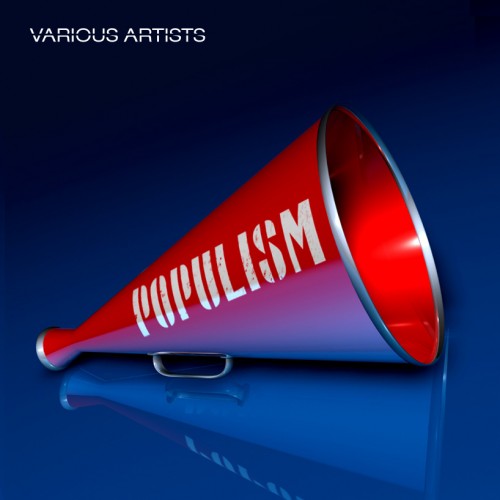
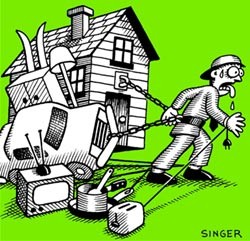
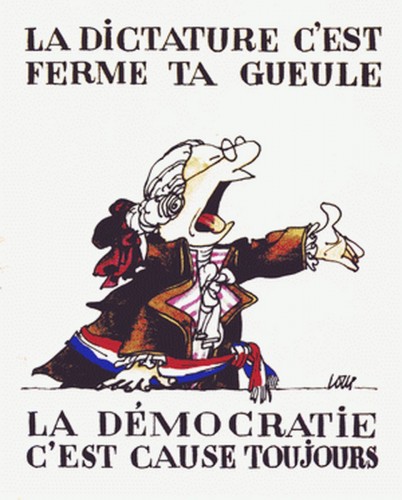
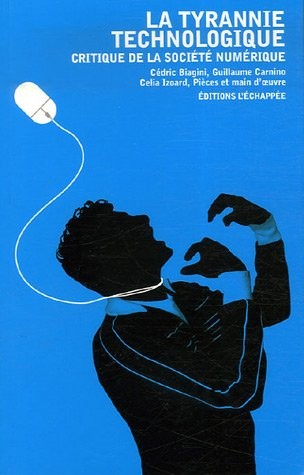


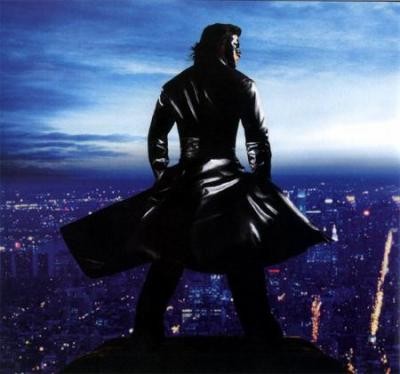
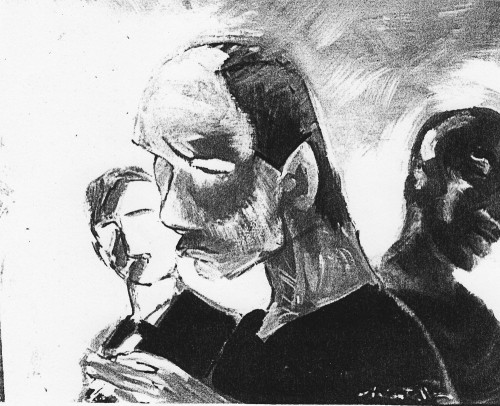

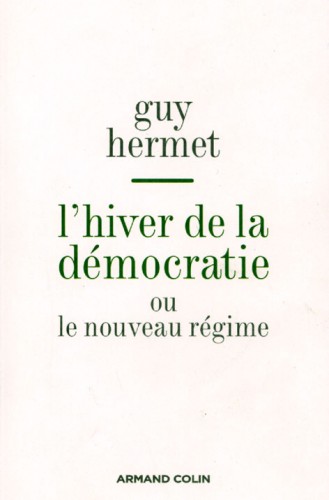
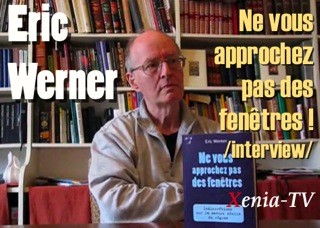
The Culture of Critique & the Pathogenesis of Modern Society
Ex: http://www.counter-currents.com/
Reinhart Koselleck
Critique and Crises: Enlightenment and the Pathogenesis of Modern Society
Cambridge: MIT Press, 1988
La politique, c’est le destin. — Napoleon
Koselleck’s Critique and Crisis (1959) is one of the great dissertations of the 20th-century German university system.
It cast new light not just on the past it re-presented, but on the present, whose own light informed its re-presentation.
This was especially the case with the potentially cataclysmic standoff between American liberalism and Russian Communism and the perspective it gave to Koselleck’s study of the Enlightenment origins of the Modern World.
How was it, he asked, that these two Cold War super-powers seemed bent on turning Europe, especially Germany, into a nuclear wasteland?
The answer, he suspected, had something to do with the moralizing Utopianism of 18th-century rationalism, whose heritage ideologically animated each hegemon.
1. The Absolutist Origins of the Modern State
Koselleck was one of Carl Schmitt’s postwar “students” and his work is indebted to Schmitt’s The Leviathan in the State Theory of Thomas Hobbes (1938).
Like his mentor, Koselleck saw modern ideologies, despite their atheistic rejection of faith, as forms of “political theology” that spoke to the faith-based heart that decides how one is to live.
In this sense, the self-proclaimed Enlightenment of the 18th century was a philosophical rebuttal to political Absolutism, whose institutional response to the breakdown of medieval Christendom occurred in ways that frustrated the liberal aspirations of the rising bourgeoisie.
In the century-long blood-letting that had followed the Protestant critique of medieval Catholicism, Europe’s ecclesiastical unity and its traditional social supports were everywhere shattered.
As the old estates broke down and old ties and loyalties were severed, there followed a period of anarchy, in which Catholics and Protestants zealously shed each others blood in the name of their contending truths.
In this sectarian strife — this bellum omnium contra omnes — where ecclesiastical authority ceased to exist and each man was thrown back upon his individual conscience, morality became a banner of war and the public observance of morality a justification for murdering Europeans with dissenting beliefs.
It was the advent of the Absolutist State system, philosophically anticipated in Hobbes’ Leviathan, that brought these bloody religious conflicts to a halt, establishing a peaceful basis to European life — by “privatizing” morality, secularizing authority, and depriving individual mentalities of political effect.
The neutralization of religious belief that came with the Absolutist secularization of the State would secure conditions requisite to the citizen’s peaceful pursuit of his private will or gain, as private ideals ceased to be obligatory duties and the State became “the artifact of atomized individuals.”
Absolutist regimes succeeded in this way in “reducing measures of contingency, conflict, and compulsion” to the status of differences of opinion — bare, in effect, of religious significance, as “external compulsion” imposed restraints on the individual’s “inner freedom.”
The historians’ designated Age of Absolutism and Enlightenment begins, then, with the Peace of Westphalia in 1648, which brought not just the Thirty Years War in the German-speaking lands, but all Europe’s religious wars to an end (except on the borderlands of Ireland and the Balkans) — and ends only with the advent of another European civil war, which opened with the liberal revolutions of 1776/1789 and closed with the English triumph over Napoleon in 1814.
History, though, rarely conforms to the tidy categories scholars make of it.
Unlike the Continent, England went from religious war to Absolutism and then to bourgeois revolution and finally to a bourgeois Restoration all in the course of a half-century (c. 1642–1688), experiencing an intense though only brief period of Absolutism.
England’s expanding maritime power, opened to all the world it dominated, had, in fact, merely a transitional need of Absolutism, for it would soon become the first implicitly liberal of the “modern” regimes.
Koselleck focuses on the longer, more pronounced Continental developments, treating England as a variant of the larger trend.
In his depiction, the Absolutist State system emerging after the Treaty of Westphalia was based on a transformation of political authority — which divided the “public sphere” into two sharply separate domains: That of political authority proper (the sovereign State) and that of society, conceived as a subaltern realm of individual “subjects.”
The subject’s moral conscience in this system was subordinated to the requirements of political necessity — what Hobbes called “reason.” This restricted morality to the social realm of private opinion, depriving it of political effect.
With Absolutism, the public interest, about which the sovereign alone had the right to decide, ceased to lay under the jurisdiction of the individual’s moral conscience.
The Continent’s new monarchical States — with Louis XIV’s France the model of the others — would govern according to a raison d’état (Staatsräson), which made no reference to religious considerations.
Law here was severed from special interests and religious factions, becoming part of a domain whose political decisions — ideally — transcended “Church, estate, and party.”
“To traditional moral doctrines, [Hobbes] opposes one whose theme is political reason.”
Persecuting churches and religiously bound social fractions were hereby forced to give way to the sovereign authority of the Absolutist monarch, who recognized no higher authority than God Himself.
As Absolutist peace took priority to faith, the individual subject — previously situated in a loose medieval hierarchy, imbued with certain corporate rights and responsibilities — was transformed into an apolitical subject.
He had, as such, to submerge his conscience to reasons of State — to reasons necessary for maintaining the peace.
This privatization of morality dictated by the State’s secularization was not directed against religion per se, but against a religious conscience whose political claims, in a period of general breakdown, threatened war.
What the Absolutist State did — and what Hobbes theoretically legitimated in the Leviathan — was to transform the individual’s conscience into a matter of “opinion,” of subjective belief, separate from politics — and thus from the political reasons of the State.
This was accomplished by making the public interest the prerogative of the sovereign, not that of the individual’s religious conscience, for the latter inevitably led to religious strife.
In this secular political system, State policy and laws became the sole concern of the sovereign monarch, who stood above religion, anchoring his laws not in a higher transcendence, but in State imperatives.
In Hobbes’ famous formulation: “Laws are made by authority, not by truth.”
Hereafter, State policy and laws would be legislated by reasons of State — not the moral conscience and not self-interest and faction. For the State could fulfill its function of securing peace and maintaining order only if individuals ceded their rights to the sovereign, who was to embody their larger welfare.
Contested issues were thereby reduced to differences of opinion that could be resolved by reasons of State.
Through Absolute sovereignty, it was possible again to create an internal realm of peace, separate from other Absolutist State systems, each of which possessed a similar peaceful interior, where the individual was free to believe whatever he wished as long as no effort was made to impose his “private” belief on the public, whether Catholic or Protestant.
This would keep religious fanaticism from trespassing on domestic tranquility and, at the same time, guarantee the State’s integrity.
Among Absolutist States, relations remained, of course, that of “a state of nature” — for each upheld and pursued policies based on their own rational sense of self-interest (raison d’état).
Conflict and war between Absolutist States were nevertheless minimized — not just by the fact that they accepted the integrity of the other’s moral conscience — but also by a sense of sharing the same Christian civilization, the same standards of significance and style, the same general, interrelated history that distinguished them from non-Europeans.
On this basis, the community of European States after 1648 grew into a family of sovereign powers, each respectful of the others’ domestic integrity, each of whose kings or queens shared the blood of other royal families, each of whose wars with other Europeans was governed by a jus publicum europaeum.
2. The Culture of Critique
It was the failure to comprehend the nature of the Absolutist State system (its avoidance of divisive political questions of faith and belief) that gave rise to the Enlightenment and its culture of critique.
For once the religious wars came to an end and authority was secularized, European society “took off.”
By the time Louis XIV died in 1715, the bourgeoisie, formerly an important but subordinate stratum of medieval European society, had become the chief economic power of an 18th-century society more and more dependent on its economic prowess. Made up of “merchants, bankers, tax lessees, and other businessmen” who had acquired great wealth and social prestige, this rising class (whose deism and materialism took “political” form in liberalism’s scientistic ideology) was nevertheless kept from State power and powerlessly suffered monarchical infringements on its monied wealth.
Resentful of State authority, the intelligentsia of this rising class took its stand in the private moral realm, which the Absolutist State had set aside for the subject and his moral conscience.
Through this breech between the public and the private, the chief ideologue of this rising bourgeoisie, John Locke, would step. His Essay Concerning Human Understanding – “the Holy Scripture of the modern bourgeoisie” — helped blur the boundary between moral and State law, as the former assumed a new authority and the distinction between the two diminished.
Pace Hobbes, Locke argued that bourgeois moral laws (now divorced from religion and anchored in rationalist notions of self-interest devoid of transcendental reference) had arisen in the human conscience, which the State had exempt from interference. As such, the citizen had a right to pass moral judgements on the State.
Such judgements, whatever the motive, eventually made State law dependent on the consent or rejection — the rule, in effect — of the bourgeoisie’s allegedly “objective” opinion.
In this situation, the bourgeois view of virtue and vice — its “religion of technicity” — took on a political charge, superseding the realm of private individual opinion, as it became “public opinion.”
At the same time, bourgeois critics favored the risk-free sphere of the unpolitical private realm, where they sought to dictate policy. Instead, then, of forthrightly challenging the underlying metaphysical principles of the Absolutist order, they framed their defining metaphysical identity (matters of faith — in this case their godless theology) in moral and economic terms devoid of political responsibility.
Bourgeois morality, not the State’s “reason,” proceeded in this way to take hold of the public — society — and set the standard for the “moral value of human action.”
This opened the way to a reconfiguration of the Absolutist relationship between morality and politics.
The public realm in Locke’s bourgeois philosophy was accordingly re-conceived as a social realm of individual consciences and this realm’s opinion as the “law” that was to bind the public.
Bourgeois morality, as such, not only entered, but soon conquered society, as its private views rose to that of public opinion.
Few, moreover, would be able to resist the pressure of its judgment.
“Reasons of State” were henceforth subject to the secular, calculating “reason” of the bourgeoisie — as “reason” ceased to be the avoidance of civil war and became the self-interest of the rationalist acting individual.
This made society increasingly independent of the State, just as State laws were increasingly subject to the “empowering” moral (and economic) judgments of society.
In the course of the 18th century, the bourgeois as citizen would assume, through his culture of critique, the “rank of a supreme tribunal” — ultimately passing judgment on the State (though doing so safely removed from the day-to-day imperatives of the political realm).
In England, following the oh-so Glorious Revolution of 1688 (a terrible, fateful year, with more to follow, in Irish history), the Whig bourgeoisie, through Parliament, became dominant, entering into an alliance with the constitutionally-bound monarch (William of Orange).
On the more religiously polarized continent, where Absolutist States had a greater role to play, the antithesis between State legislation and bourgeois secular morality (rooted in Protestantism’s critical essence) assumed a different, more antagonistic character.
This continental polarization of morals and politics — compounded by the growing social weight of the bourgeoisie and the discontent generated by its political disenfranchisement — grew in the course of the 18th century, as the bourgeoisie increasingly assumed the leadership of “society.”
Its moral critique of the State and of the ancien régime — a critique posed in secular and rationalist, rather than Christian terms — is what is known as the “Enlightenment,” that metapolitical “culture of critique,” whose light allegedly emanated from the bourgeoisie’s rational conscience (which was modeled in many ways on that of the Jews, for it was based on the dictates of money and its unpolitical affirmation of the private).
3. The Crisis of the Old Order
“When and whenever [men] are subjects without being citizens, they inevitably endow other concerns and pursuits—economic, social, cultural—with an independent and hence rival authority.” This was the great failing of Absolutism.
In such a situation, the voluntary associations of the bourgeoisie—Masonic lodges, salons, clubs, coffee-houses, academies, sociétés de pensées, the “Republic of Letters”—became rival centers of moral authority and eventually rival models of political authority.
The criticism of these bourgeois organs sought to “test” the validity or truth of its subject, making reason a factor of judgement in its process of pro and con.
Bourgeois judgements critical of the political system set off, in turn, a crisis threatening the existing State.
As scientific materialists, armed with a naive analytic-empiricist epistemology, such bourgeois critics waged their subversive campaign with no appreciation of existing political realities or the imperatives and limits these realities imposed. This would make their moral crusade unrealistic, Utopian, unconcerned with the “contingency, conflict, and compulsion” that occupies and defines the political field.
Their Utopian proposals (their anti-political politics) constituted, as such, no actual political alternative, based as they were on a purely formal, abstract understanding of the political realm, which it subjected to the individual’s moral conscience.
But once the private moral realm started to impinge on the political sphere of the Absolutist State, the State itself was again called into question.
First unconsciously and then increasingly consciously, the bourgeois Enlightenment applied its Utopian and ultimately hypocritical standards to the State, whose political imperatives were ignored rather than recognized for what they were—so as not to complicate its own geometrical schemes of reform.
The Enlightenment, it followed, was wont to see itself in moral terms, not political—not even metapolitical—ones.
This self-deceiving politics could only end in ideological excess and terror—for the sole way to realize its Utopian political theology would be by forcing others to accept and submit to it.
The result, Koselleck concludes, was the advent of the modern condition—this “sense that we are being sucked into an open and unknown future, the pace of which has kept us in a constant state of breathelessness ever since the dissolution of the traditional ständische societies.”
The turbulent “tribune of reason” bequeathed by the Enlightenment aimed, moreover, at every sphere of human endeavor—not just the Absolutist State, traditional Catholic Christianity, or the numerous corporate restraints inhibiting the market.
Everything historically given was, as such, to be re-conceived as a historical process that had to be re-directed, reformed, and re-planned, as the dictates of fate gave way to the rationalist obliteration of political aporia (i.e., the impasses or challenges posed by exceptional situations determined only by the sovereign).
Through its Règne de la Critique, the bourgeoisie (as prosecutor, judge, and jury) subjected the State to an enlightened conscience that debunked its “rationality” and increasingly advocated, or implied, its replacement.
With this rationalist critique of Absolutism came an unfolding philosophy of history—which promised a victory that was to be gained without struggle or war, that applied to all mankind, and that would bring about a better, more rational, and peaceful future—if only “reason” (i.e., bourgeois interests) was allowed to rule.
Through this critique, politics—the tough decisions fundamental to human existence—was dissolved into an Utopian project indifferent to the historical given. Everything, it followed, was subject to criticism, nothing was taboo—not the “order of human things,” not even life itself would be spared the alienation that came with the critic’s unpolitical reason.
Then, as the critic assumed the right to subject the whole world to his verdict, acting as “the king of kings,” criticism was “transformed into a maelstrom that sucks the present from under the feet of the critic”—for his criticisms amounted to an endless assault on the present in the name of a far-off, but allegedly enlightened future.
4. Modern Pathogenesis
At the highest level, Koselleck offers “a generic theory of the modern world”—one that seeks to explain something of our age to us.
In his view, criticism engendered crisis, calling the future into question.
The Enlightenment’s culture of critique could, however, only culminate in revolution—a revolution whose new order would privilege the rich and powerful (and, in time, the Jews).
By subordinating law to morality, ignoring the differences that divide men over the great questions of existence, the liberal State born of Enlightenment culture stripped sovereignty of its power.
Henceforth bourgeois morality became the invisible framework of the State, as sovereign authority was changed into an act of persuasion and reason—and the essence of politics (no longer the polemic over fundamental problems of human existence) became the non-political rule of a discursive bourgeoisie indifferent to matters of faith and desirous of a fate-less society without a sovereign State.
As social and political realities were indiscriminately mixed and subjected to the invisible opinion of the bourgeois public, based on an ostensively objective reason, everything failing to accord with that opinion became an injustice, subject to reform.
Society here assumed the right to abrogate whatever laws it wished, inadvertently establishing a reign of permanent revolution.
Refusing to recognize the State’s amoral (rather than immoral) character, the emerging bourgeois political system—with its culpablizing, but “value free” politics and its civil ideal taken as the universal destiny of all humanity—not infrequently had to resort to naked force to realize its Utopia: the terror and mass killings that followed 1789, the nuclear holocaust inherent in the Cold War, the on-going, unrelenting destructuration of the local and global today.
The consequence has been liberalism’s non-political State (whether in its 19th-century guise as a Night Watchman State or in its 20th-century Nanny State form). This State replaced politics with morality, tradition with planning, disagreements with a cold indifference to all that matters. It became thus a legal order, a Rechtsstaat, supposedly unattached to any constituting system of ascription or belief, and thus beyond any “exception” that might make visible the actual basis of bourgeois rule.
In this situation, where politics were negated and political problems were reduced to “organizational-technical and economic-sociological tasks,” the world was emptied of “seriousness” and turned into a vast realm of entertainment, where the bourgeois was allowed to enjoy the fruits of his acquisitions.
With liberalism, then, politics ceases to be a destiny and becomes a technique hostile to all who refuse its philistine philosophy of history—for the linear notion of progress inherent in this philosophy undermines and “reforms” everything that has historically ensured the integrity of white life.
Source: TOQ Online, Dec. 24, 25, & 26 2009